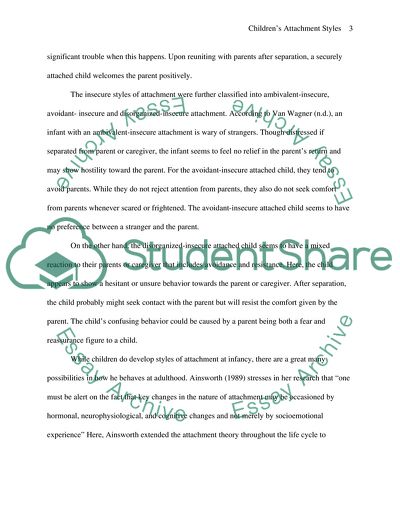Cite this document
(Attachment Styles and its Effect on the Development of a Maltreated Foster Case Study Example | Topics and Well Written Essays - 1500 words, n.d.)
Attachment Styles and its Effect on the Development of a Maltreated Foster Case Study Example | Topics and Well Written Essays - 1500 words. https://studentshare.org/psychology/1704887-pschology-attachment-styles-and-their-effects-on-development
Attachment Styles and its Effect on the Development of a Maltreated Foster Case Study Example | Topics and Well Written Essays - 1500 words. https://studentshare.org/psychology/1704887-pschology-attachment-styles-and-their-effects-on-development
(Attachment Styles and Its Effect on the Development of a Maltreated Foster Case Study Example | Topics and Well Written Essays - 1500 Words)
Attachment Styles and Its Effect on the Development of a Maltreated Foster Case Study Example | Topics and Well Written Essays - 1500 Words. https://studentshare.org/psychology/1704887-pschology-attachment-styles-and-their-effects-on-development.
Attachment Styles and Its Effect on the Development of a Maltreated Foster Case Study Example | Topics and Well Written Essays - 1500 Words. https://studentshare.org/psychology/1704887-pschology-attachment-styles-and-their-effects-on-development.
“Attachment Styles and Its Effect on the Development of a Maltreated Foster Case Study Example | Topics and Well Written Essays - 1500 Words”. https://studentshare.org/psychology/1704887-pschology-attachment-styles-and-their-effects-on-development.


